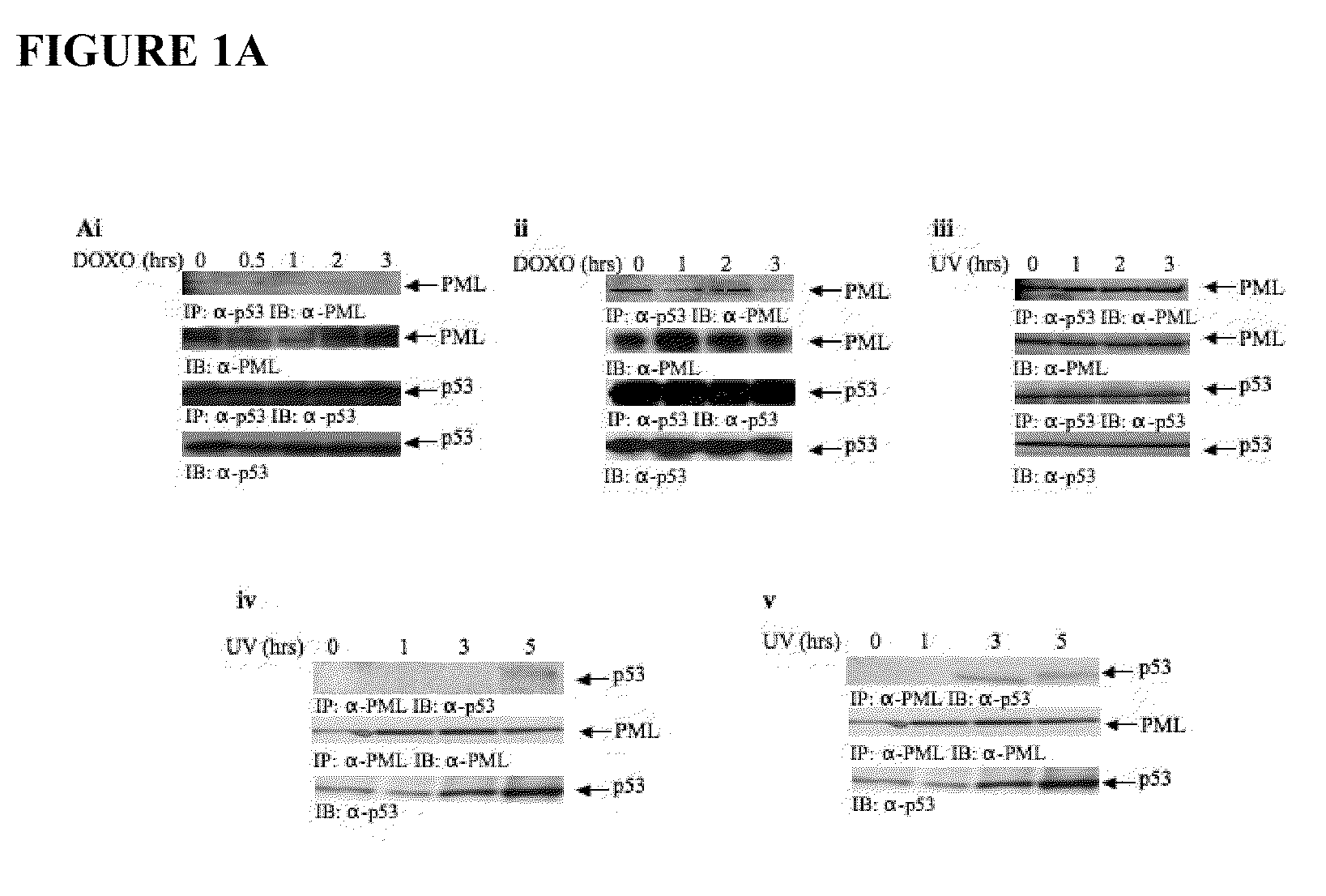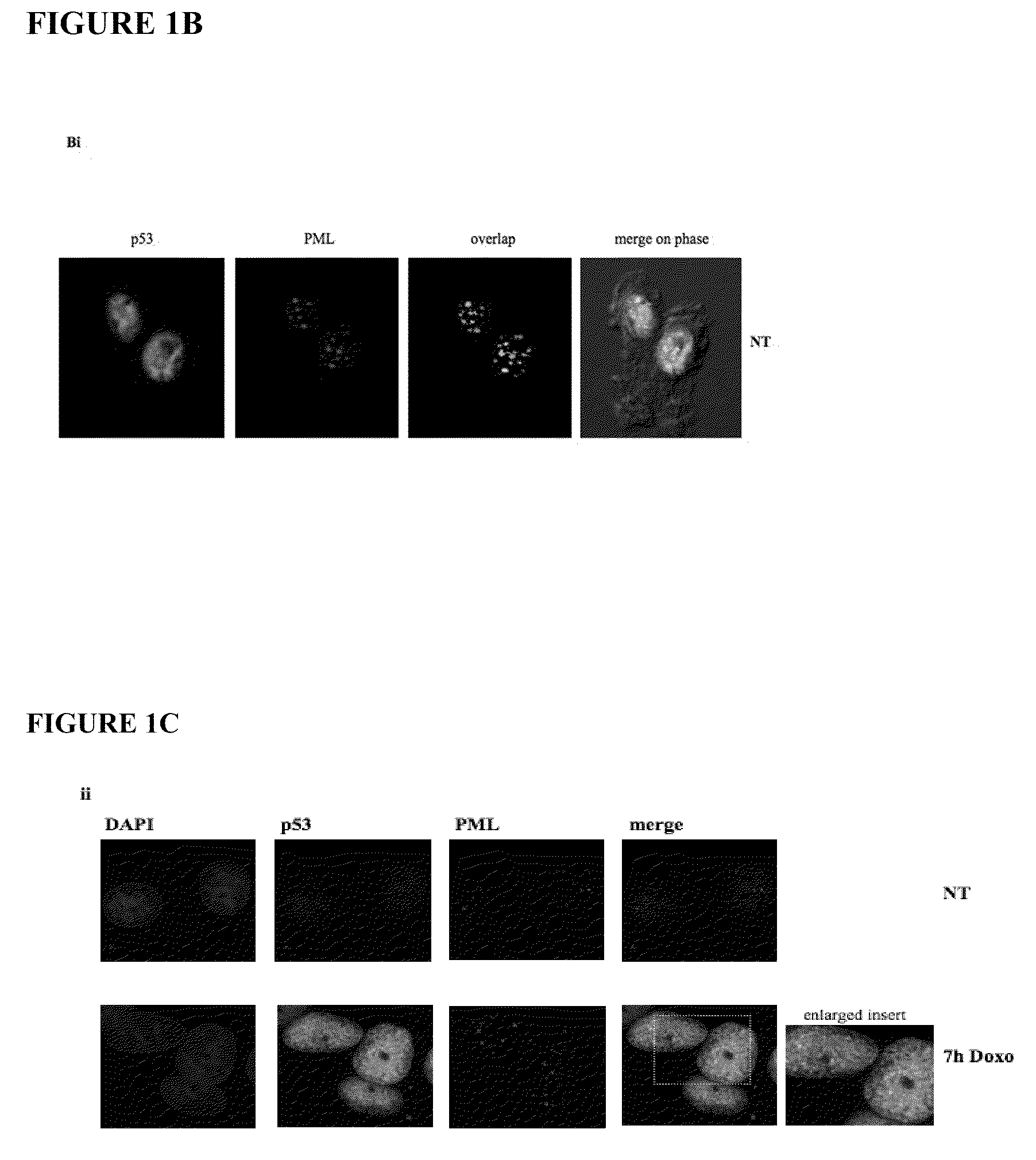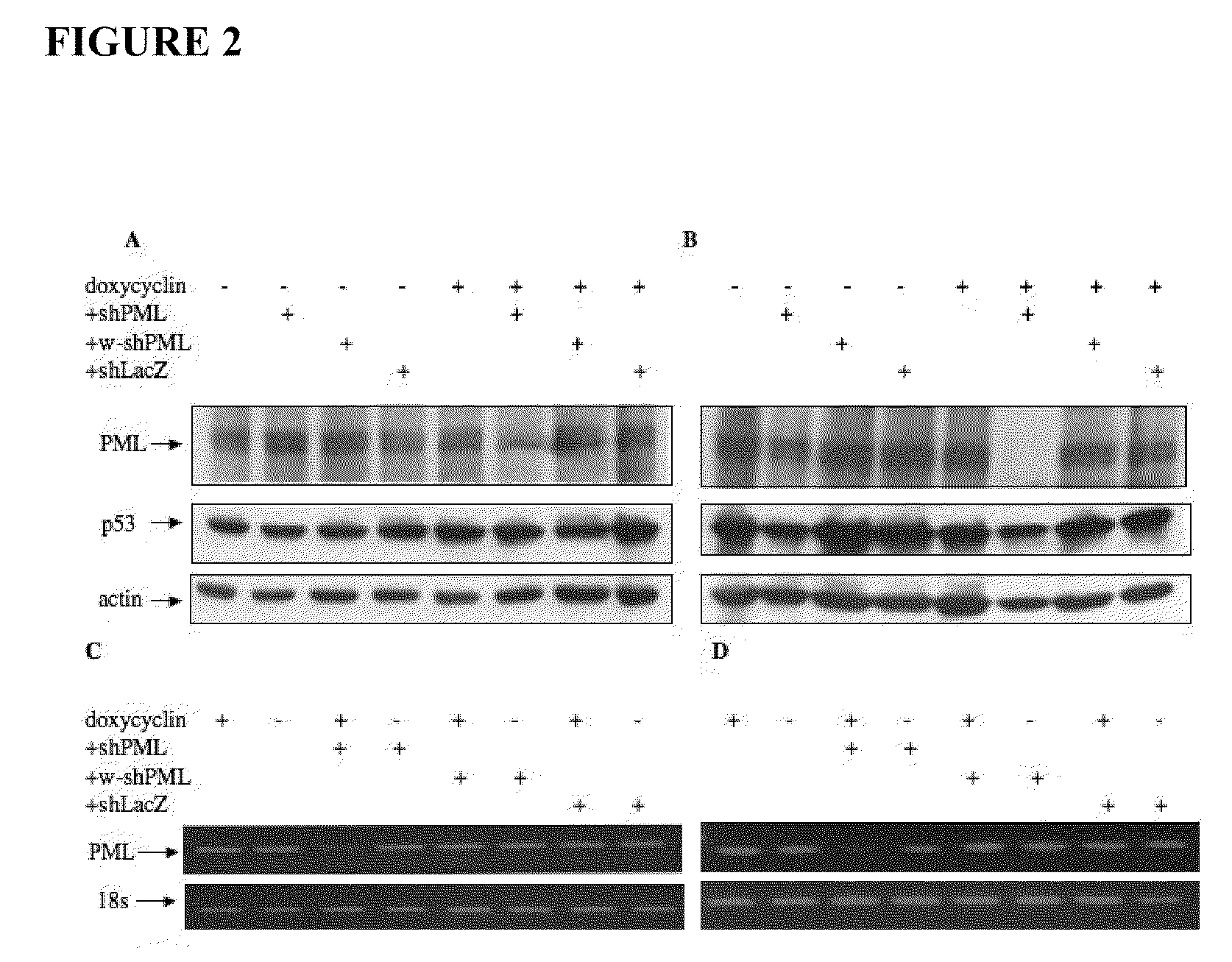Cancer therapy
a cancer and cancer technology, applied in the field of cancer therapy, can solve the problems of many potential targets lacking suitability, prone to tumorigenesis, and small therapeutic molecule development, and achieve the effects of inhibiting the development of small therapeutic molecules, and preventing tumors
- Summary
- Abstract
- Description
- Claims
- Application Information
AI Technical Summary
Benefits of technology
Problems solved by technology
Method used
Image
Examples
example 1
Methods and Materials
[0090]All materials were purchased from Sigma Chemicals Co., St. Louis, Mo., USA, unless otherwise stated. Solvents were analytical grade and water was double distilled. All experiments were performed in triplicate and repeated at least 3 times.
Cell Culture
[0091]Human colon adenocarcinoma cell lines HT29 (mutant p53(R273H); p53273), SW480 mutant p53 (R273H / P309S; p53273 / 309), engineered colon carcinoma cell line HCT116 p53− / − (Bunz et al.) and breast cancer cell line SKBR3 (containing mutant p53(R175H); p53175) and their derivatives, were cultured in Dulbecco's Modified Eagle's Medium containing 10% fetal calf serum (Biological Industries, Kibbutz Beit-Haemek, Israel). Promyelocytic leukemia cells NB4 (mutant p53(R248Q / R273H), p53248 / 273) (Fleckenstein et al.), human lung adenocarcinoma cell line H1299 lacking p53 expression, and its derivatives stably expressing either mutant p53273 or p53175 (Blandino et al.) were grown in Roswell Park Memorial Institute (RPMI...
example 2
Mutant p53 and PMI Interact and Co-Localize
[0103]The inventors have previously shown that PML facilitates the phosphorylation of wt p53 at Ser20 by check-point kinase 2 (Chk2; Louria-Hayon et al.) and Thr18 by CK1 (Alsheich-Bartok et al.). These observations raised the surprising possibility that PML may also facilitate the phosphorylation of mutant p53. To investigate this suggestion, NB4 acute promyelocytic leukemia cells were exposed to ionizing irradiation in order to induce p53 phosphorylation in the absence of active PML, or in the presence of arsenic trioxide (As2O3) which activates PML. Consolidating previous findings (Alsheich-Bartok et al.), activation of PML by As2O3 facilitated IR-induced phosphorylation of p53 on Thr18 (FIG. 7), suggestive of PML involvement.
[0104]Wt p53 and PML (isoform IV, formerly PML3) interact and co-localize (Fogal et al.) upon exposure to stress (Louria-Hayon et al. and Bischof et al.). The observed PML-mediated phosphorylation of mutant p53 prov...
example 3
Knockdown of PML Reduces the Number of Mutant P53 Bearing Cancer Cells
[0106]To assess the influence of PML in human cancer cell lines bearing endogenous mutant p53, PML expression was knocked down using RNA interference. HT29 and SW480 were transduced with lentivirus encoding shRNA to PML. The efficacy of PML down-regulation was evaluated by Western blotting using an antibody that detects multiple PML isoforms (clone PML-97; Sigma). Under the influence of shPML1 (SEQ ID No: 1) expression of major PML isoforms was reduced in HT29 and SW480 (FIGS. 2A and 2B, respectively). Control shRNA to LacZ (shLacZ) and wobble shRNA to PML (w-shPML1; SEQ ID No: 4), failed to reduce PML levels, indicating the specificity of PML knock-down. A reduction in PML levels in response to shPML1 was also confirmed at the mRNA level. RT-PCR directed to a region common to multiple isoforms of PML revealed a reduction in PML transcript, consistent with the results observed at the protein level (FIGS. 2C and D)...
PUM
| Property | Measurement | Unit |
|---|---|---|
| body weight | aaaaa | aaaaa |
| body weight | aaaaa | aaaaa |
| body weight | aaaaa | aaaaa |
Abstract
Description
Claims
Application Information
 Login to View More
Login to View More - R&D
- Intellectual Property
- Life Sciences
- Materials
- Tech Scout
- Unparalleled Data Quality
- Higher Quality Content
- 60% Fewer Hallucinations
Browse by: Latest US Patents, China's latest patents, Technical Efficacy Thesaurus, Application Domain, Technology Topic, Popular Technical Reports.
© 2025 PatSnap. All rights reserved.Legal|Privacy policy|Modern Slavery Act Transparency Statement|Sitemap|About US| Contact US: help@patsnap.com



